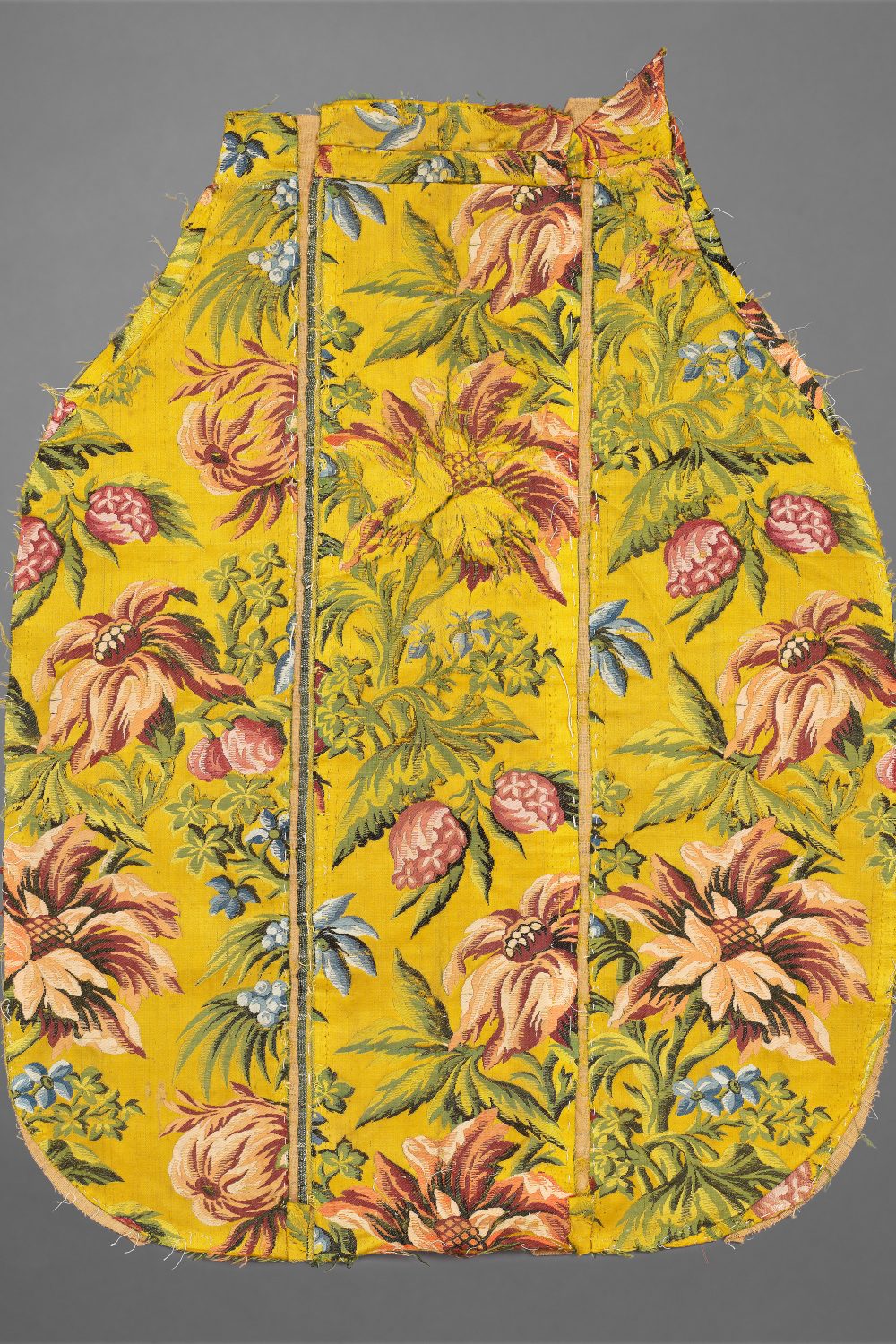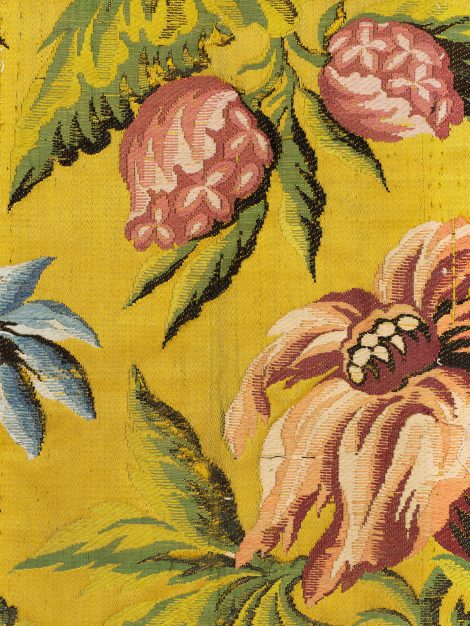The distinctive shape of these three panels placed together suggests that they were once the front of a chasuble, an ecclesiastical garment or vestment worn by a priest when celebrating mass. Originally conical in form and made from a richly patterned or embroidered silk they evolved into a more practical double sided shield shape.
This example is likely to have been used by the Catholic church on the Continent; ornate vestments were not worn in the Anglican church until liturgical changes prompted the revival of ceremonial garments in some churches from the mid 19th Century. The silk is probably French, its opulent design of flowers and pomegranates characteristic of those woven in Lyon, although they were influential on the silk industry in London where very similar designs were produced. Silks were not woven specifically for ecclesiastical use until later in the 18th Century, the same designs deemed appropriate for both religious and secular garments, and were ordered directly by the church or donated by parishioners. Surviving continental chasubles of the time show heavy metallic braid, known as lace, running down each side of the central panel and bordering the garment. While colours of vestments conformed to the liturgical festivals and seasons they were less subject to standardisation than they were to become in the later 19th Century.
Several examples of surviving 18th Century chasubles can be seen in this article.

